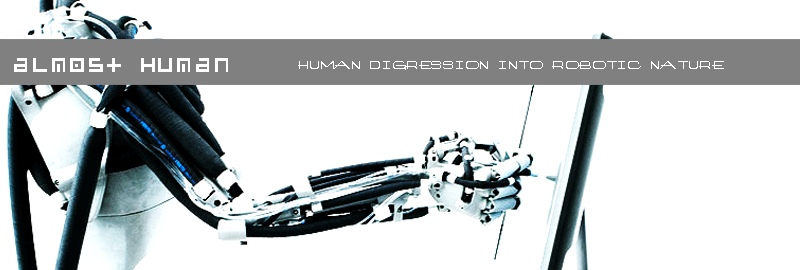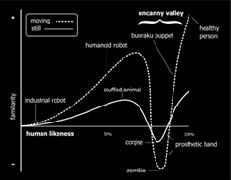 |
 |
 |
||
| BACK TO 443 THE UNCANNY | The “uncanny valley”, as hypothesized by Masahiro Mori, focuses on the emotional response of humans to robots and other non-human entities. Mori's hypothesis states that as a non-human entity becomes more human-like in its appearance and gestures, the emotional response from a human being to the non-human entity becomes increasingly positive and empathetic. Until, an apex is reached beyond which the human to non-human response shifts from empathy to repulsion. Yet, as the gestures and appearance of the non-human entity continue to become less distinguishable from a human being, the human to non-human emotional response retains a positive relationship once more and approaches human-to-human empathy levels. While Mori's hypothesis of the “uncanny valley” was designed exclusively to understand the response of human beings to non-human entities, this website hopes to argue that the “uncanny valley” can simultaneously be used to measure the aforementioned relationship as well as the response of human beings to human beings becoming non-human, or “almost human”. Through the examination of specific characters appearing in the films studied through-out the coarse; Kevin, the murderous, sociopath cannibal, Sin City, and Bob Arctor, the substance D addicted alter ego of Agent Fred, A Scanner Darkly, it will become evident that the “uncanny valley” is not exclusive to non-humans, but any entity, human or non, which, by way of external forces or their own, deviate into the “almost human” margin of human emotional repulsion. While traditional explorations into the “uncanny valley” deal with the non-human transformation towards human, such as Sonny, the robot accused of murder, I, Robot, who is regarded with empathy by the viewer, this essay is less concerned with the robot's transgression into human nature, and more concerned with human digression into robotic nature.
|